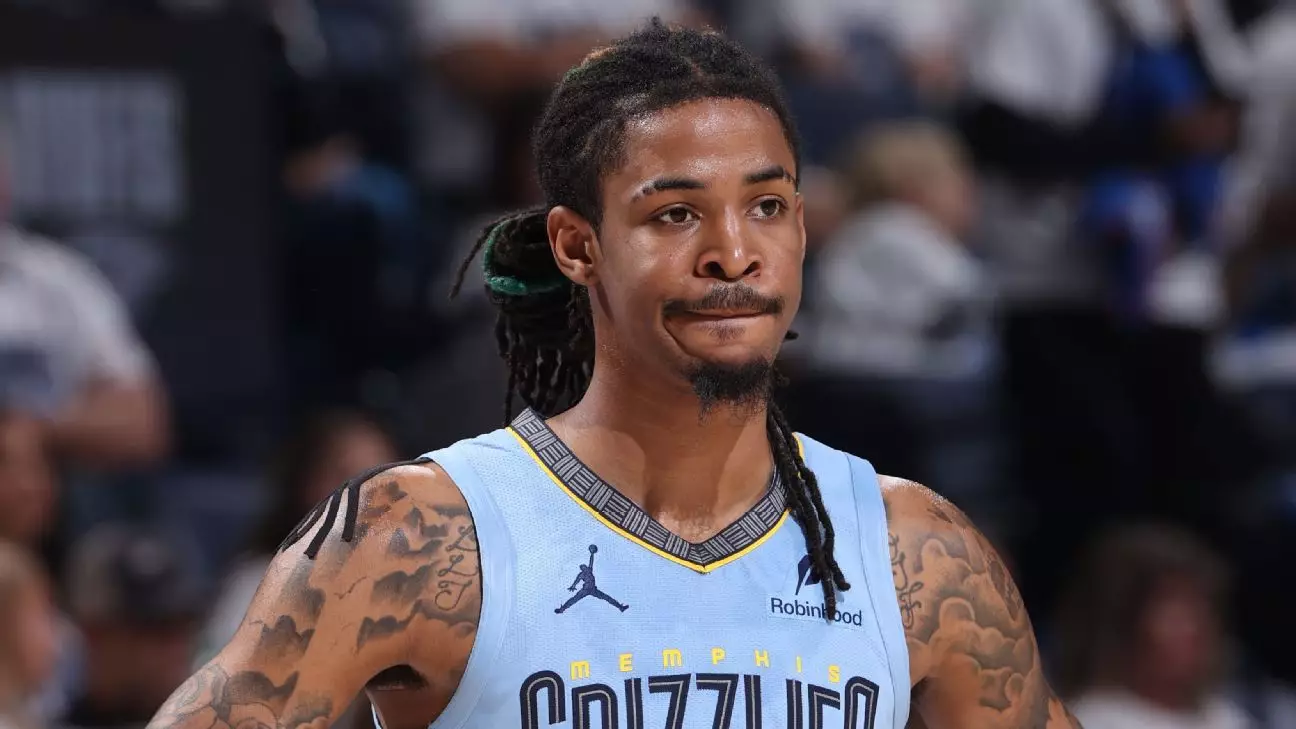In the world of sports, the lines between competition and personal conduct can often blur, especially in informal settings like pickup games. Such was the case in a recent legal battle involving NBA superstar Ja Morant and college athlete Joshua Holloway. This unfortunate scenario emerged when a casual game turned contentious in July 2022, leading to a highly publicized lawsuit. During this pickup game at Morant’s parents’ home, tensions escalated into a physical confrontation, leaving Holloway claiming he was assaulted by Morant, a two-time All-Star with the Memphis Grizzlies.
Holloway, who was just 17 at the time and an aspiring basketball player at Samford University, alleged that Morant punched him during the game. The incident allegedly began when Holloway threw a basketball at Morant in a moment of aggression, which Morant interpreted as a threat, prompting a defensive reaction. This case raises significant questions around the nature of self-defense, especially in the context of sports where emotions run high.
The Legal Framework: Tennessee’s Stand Your Ground Law
At the heart of the matter is Tennessee’s “Stand Your Ground” law, which allows individuals to use reasonable force to protect themselves when they believe their safety is at risk. In this instance, Judge Carol Chumney ruled that Morant was operating under this protection when he responded to Holloway’s apparent aggression. The legal intricacies surrounding self-defense in civil lawsuits are complex, and this case shines a light on the difficulties courts face in striking a balance between self-protection and accountability.
The judge’s decision to grant Morant a presumption of civil immunity based on self-defense principles underscores a pertinent issue: how can courts differentiate between rightful self-defense and excessive force? This case raises broader societal questions about how the law applies differently to public figures, especially in contexts where aggression can be perceived in numerous ways.
Credibility in Court: Testimony and Its Ramifications
As with many legal disputes, the resolution hinged significantly on witness testimony. Holloway’s account, which painted Morant as the aggressor, was challenged by other witnesses present at the scene, including former NBA player Mike Miller. His testimony suggested that Holloway’s actions led to the confrontation, which complicated the narrative put forward by Holloway.
In an environment where reputations are everything, testimony can manipulate the public perception of athletes involved in incidents. The judge pointed out discrepancies in Holloway’s recollection compared to others’ accounts, illustrating a courtroom reality where credibility weighs heavily on the outcome of the case. Ultimately, the contrasting narratives spotlight the difficulties juries and judges confront when discerning truth amid conflicting statements.
Lessons in Leadership: The Bigger Picture
Beyond the legal ramifications lies a deeper discourse on the responsibilities of public figures in high-stakes environments. Both Morant, a celebrated NBA player, and Holloway, a young athlete trying to carve out his own niche, occupy roles as role models for aspiring athletes. In her ruling, Judge Chumney emphasized their potential for leadership, suggesting that the incident served as an opportunity for both men to transcend the courtroom and embrace their capacities to inspire future generations.
In contemporary society, athletes wield substantial influence, making it crucial that they demonstrate maturity and accountability. This case signifies a moment of reflection for all involved: the dangers of allowing passion to override judgment, and the importance of upholding integrity even in the heat of competition. The hope is that both parties will navigate this incident towards a more positive path, fostering an environment conducive to growth and mentorship rather than conflict.
The Aftermath: Repercussions Beyond the Courtroom
The resolution of this legal dispute may have settled the immediate conflict, but its implications echo throughout the sports and legal communities. Athletes in positions similar to Morant’s or Holloway’s must remain vigilant about their behavior on and off the court, as public perception can often pivot dramatically based on isolated instances. This case is a potent reminder that actions, even in moments of perceived self-defense, can reverberate far beyond a single event, impacting careers, reputations, and future opportunities.
As courts increasingly find themselves navigating the intersection of sports culture and legal principles, both participants and spectators must recognize that the definitions of aggression and self-defense are as fluid as the games themselves. The lessons learned from this incident could serve as a guide for future athletes, reminding them that their actions invariably shape not just their careers, but also the very fabric of the athletic community they represent.


Leave a Reply